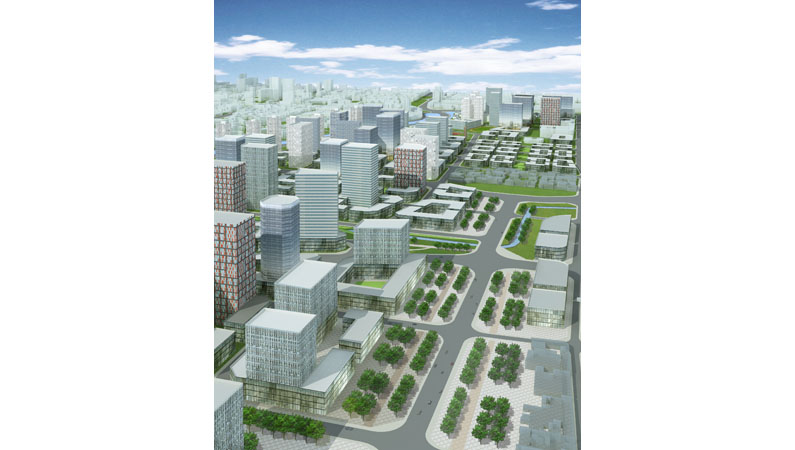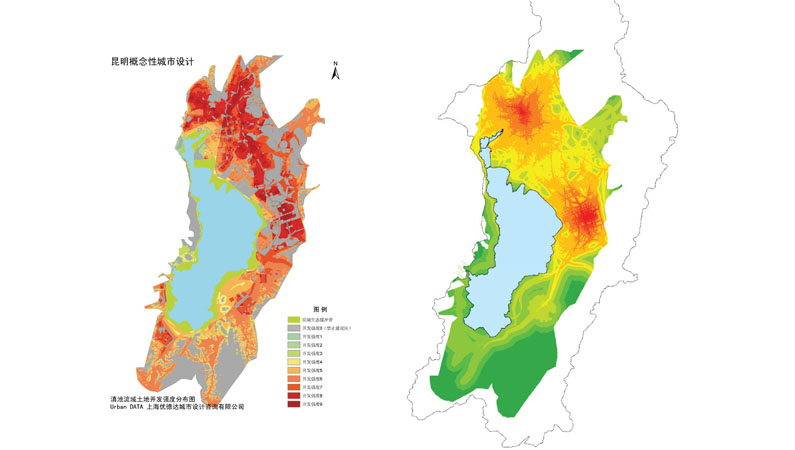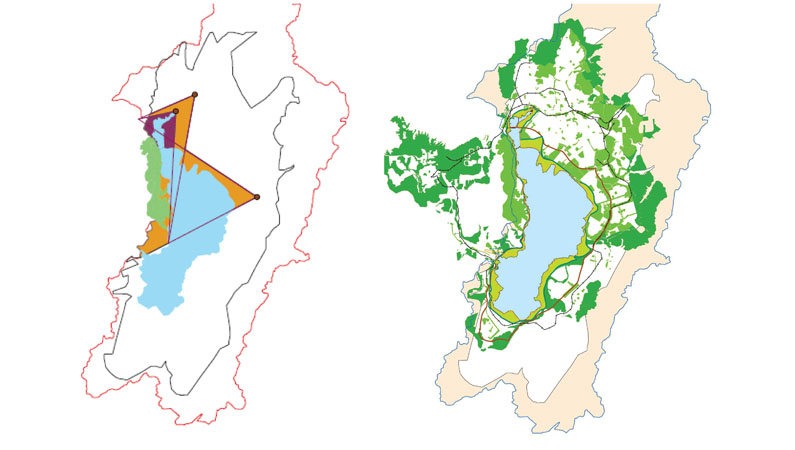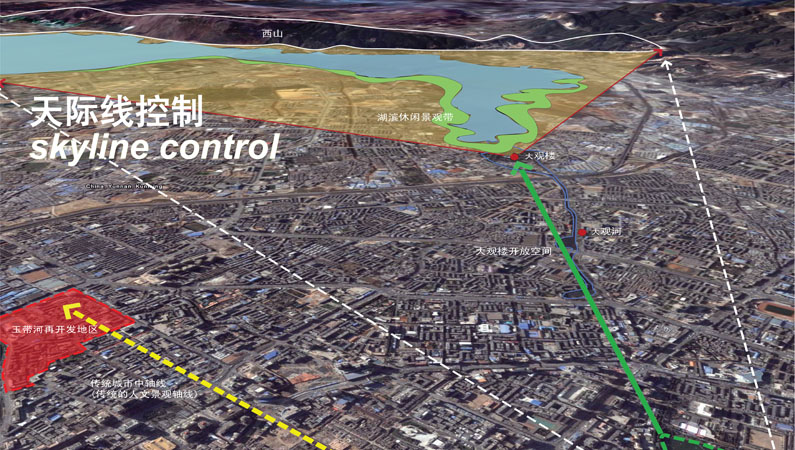URBAN DESIGN
URBAN PLANNING
LANDSCAPE
CONSULTING
CULTURAL
HOUSING
COMMERCIAL
OFFICE
MIXED USE
Yuxi Central City Urban Design
Shanghai Jinshan headquarter park
Beihu CBD Urban Design
Canal Conjunction Area
Beicheng New Area Urban Design
Waterfront Skyline Research
Yanzhou Urban Design
Yunnan Artist Community
Kunming Dianchi Resort Area
Kunming Central City Redevelop
Kunming Conceptual Urban Design
Huaihai Road Urban Design
Ningbo Industrial Design Center
Kunming Conceptual Urban Design
Kunming
2008
3000 sq km
This is a conceptual urban design pursued at the regional level for a city with a population of 3 million and a regional land area of 3000 square kilometres.
Urban design is a strategic tool for improving the quality of urban space, not only physically but also symbolically. Urban design can counteract the inefficiency of traditional urban planning. By using broader knowledge and more flexible, holistic methods, urban design can enhance the city’s legibility and sense of place and reduce the tension of modern city life.
During the past two decades of rapid urban growth in China, the potential of urban design has not been fully realised. China’s cityscapes have become homogeneous, monotonous places that have lost their identity. As one of the regional economic and political centres of South West China, Kunming has been facing the same issue of losing its uniqueness in the process of rapid economic and spatial transformation.
Kunming has a unique natural environment and cultural characteristics. The Dianchi Region is the backbone of urban development in the area with the city growing along one of the largest highland fresh water lakes in the world, Lake Dianchi. The special geography of the Dianchi Basin creates a beautiful scenic landscape and pleasant climate. Due to its comfortable climate Kunming is known by the epithet ‘The City of Eternal Spring’.
Kunming also has a long and varied history of cultural development: the archaeological findings of prehistoric human activities; the development of the city through the Eastern Zhou, Tang, Yuan, and Ming dynasties; the political, military, economic and cultural development during the early days of the Republic China; the wide variety of ethnic minorities now living in Yunnan. All of these form a rich layer of cultural and historical resources. Unfortunately the economic activities and urban growth of the last few decades have obliterated much of these resources.
The destruction of cultural resources in Kunming highlights the need for a more strategic method of urban development, through urban design. Clearer strategies are required to regulate construction and development within the Dianchi Region, in order to protect the area’s valuable assets from short sighted economic development activities. The aim of this urban design is to preserve, enhance, and restore the regions natural attributes and cultural characteristics. These unique attributes will be considered and integrated into the new urban developments whilst creating high quality urban spaces that meet the demands of modern city life.
This conceptual urban design has been developed at the regional level and local level. The regional level urban design considers the whole Dianchi region of roughly 2920 sq km. The basic form of urban structure, including the open space system, city skyline and density of development, is defined through the following: analysis of environmental, cultural and economic elements of urban development using GIS; consideration of aesthetical issues; consideration of environmental and economic sustainability. The local level urban design focuses on the urban district and urban blocks. It defines the size of the urban blocks and therefore the urban fabric of the city. By selecting some key focal districts such as the historical city centre (Zhengyi St. District), Caohai Waterfront Distinct and the new city centre (Chenggong New City Business Centre), the local level urban design defines the relationship between each building, between building and open space and between conservation and development.
The most important goal of the design at this stage is to provide a structure for the development of Kunming which creates a diverse and vital urban environment, while remaining flexible and adaptable to future changes.





